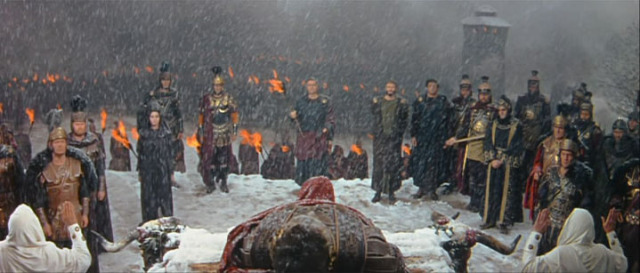The belief that America is in decline has led to many comparisons between our time and the fall of Rome. A current bestseller—The Benedict Option—makes the case that Christians today must recover and preserve Western tradition much like their predecessors did in the early centuries of the Middle Ages.
The date most commonly referenced for the fall of the Roman Empire is September 4, 476 A.D., when the barbarian Odoacer sacked Rome and abolished the office of Emperor. This date was first assigned by the English historian Edward Gibbon in his Decline and Fall of the Roman Empire (1776), and the societal conditions in Rome leading up to that date are the reference point for most apocalyptic comparisons between then and now.
But what many of you may not know is that there is considerable disagreement about when “Rome” actually fell, and even if it fell at all!
If you ask many Eastern Orthodox Christians, they will claim that the Roman Empire lasted until the Fall of Constantinople to the Ottoman Turks in 1453.
Their reasoning?
In 330 A.D. the Emperor Constantine moved the capital of the Roman Empire to Byzantium, which he dedicated as the “new Rome” and renamed “Constantinople.” After the fall of the Western Empire to the barbarians, this empire remained a power in the Mediterranean world for over a thousand years. Today, we in the West popularly know it as the “Byzantine Empire,” a later term applied by Western historians during the Renaissance. But its inhabitants referred to it simply as the “Roman Empire,” and themselves as “Romans” (Romaioi). Even today certain Greeks call themselves “Romans.”
And then there are some who claim that the fall of Rome did not take place until 1917!
Their reasoning?
Decades after the fall of Constantinople, in the 16th century, the monk Filofei (1465-1542) gave expression to the growing notion that Moscow (and implicitly, the whole of Russia) was the “Third Rome.”
The First Rome, as the thinking went, had fallen into heresy, and thus its vocation as protector of Christianity was transferred to Constantinople, the “Second Rome.” But the fall of Constantinople left a vacuum of authority in the Orthodox Christian world, and it was believed that Moscow and its tsars were the ones to fill it.
The famous passage from Filofei expressing this belief is as follows:
“I would like to say a few words about the existing Orthodox empire of our most illustrious, exalted ruler. He is the only emperor on all the earth over the Christians, the governor of the holy, divine throne of the holy, ecumenical, apostolic church which in place of the churches of Rome and Constantinople is in the city of Moscow, protected by God, in the holy and glorious Uspenskij Church of the most pure Mother of God. It alone shines over all the earth more radiantly than the sun. For know well, those who love Christ and those who love God, that all Christian empires will perish and give way to the one kingdom of our ruler, in accord with the books of the prophet, which is the Russian empire. For two Romes have fallen, but the third stands, and there will never be a fourth.”
However, the Russian Revolution of 1917 and the accompanying murder of Tsar Nicholas II, in the minds of some, ended Moscow’s role as the third Rome. According to author Seraphim Rose:
“In 1917 the ‘Constantinian Age’ came to an end, the Orthodox Empire was overthrown—and the world, beginning with Moscow, has been thrown into an age of lawlessness and atheism (and in Christian life, of apostasy) such as has not yet been seen. Tsar Nicholas II was the last representative of this ideal of lawful Christian authority, and the age of lawlessness began appropriately with his murder.”
And there are even those who claim that “Rome” has not yet fallen.
Their reasoning?
In Christian apocalyptic literature, it has been typical to interpret the four kingdoms from the prophet Daniel’s prophecy (Dn 7), which will precede the end of the world, as Babylon, Persia, Greece, and Rome. According to many Church Fathers, from the fourth and last kingdom of Rome—which, according to Daniel, will “devour, trample down, and crush the whole earth”—will come the Antichrist, who will inaugurate the end of the world.
The 19th-century thinker John Henry Newman—whom author James Joyce referred to as the “greatest prose stylist” of the Victorian era—describes this belief in his sermon “The Religion of Antichrist”:
“[A]n Antichrist, whoever and whatever he be, is to come; marvels are to come; the old Roman Empire is not extinct; Satan, if bound, is bound but for a season; the contest of good and evil is not ended.”
As you can see, one’s answer to the question “When did Rome fall?” depends largely on one’s historical and theological presuppositions.
—
















Leave a Comment
Your email address will not be published. Required fields are marked with *